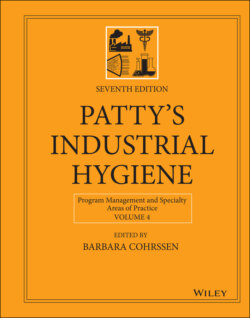Читать книгу Patty's Industrial Hygiene, Program Management and Specialty Areas of Practice - Группа авторов - Страница 58
5.9.1 Incident, Nonconformity, and Corrective Action
ОглавлениеISO 45001:2018 (§10.2) states that “the organization shall establish, implement, and maintain, a process(es) including reporting, investigating and taking action to determine and manage incidents and nonconformities” (69). Specific requirements include the following: timely response; conducting root cause analysis, with worker involvement; assessing potential historical trends; and ensuring that findings are feed back into the planning process. The standard defines nonconformity, incident, and corrective action as follows.
Nonconformity (§3.34) – the “non‐fulfilment of a requirement” (70). This relates to the requirements of ISO 45001, as well as requirement that the organization establishes for itself.
Incident (§3.35) – is an “occurrence arising out of, or in the course of, work that could or does result in injury and ill health” (70). An incident where no injury and ill health occurs, but has the potential to do so, may be referred to as a “near‐miss,” “near‐hit,” or “close call.” Although there can be one or more nonconformities related to an incident, an incident can also occur where there is no nonconformity.
Corrective action (§3.36) – is an “action to eliminate the cause(s) of a nonconformity or an incident and to prevent recurrence” (70). This term is one of the common terms and core definitions for ISO MSSs. The definition has been modified to include a reference to “incident,” as incidents are a key factor in OHS, yet the activities needed for resolving them are the same as for nonconformities, through corrective action.
